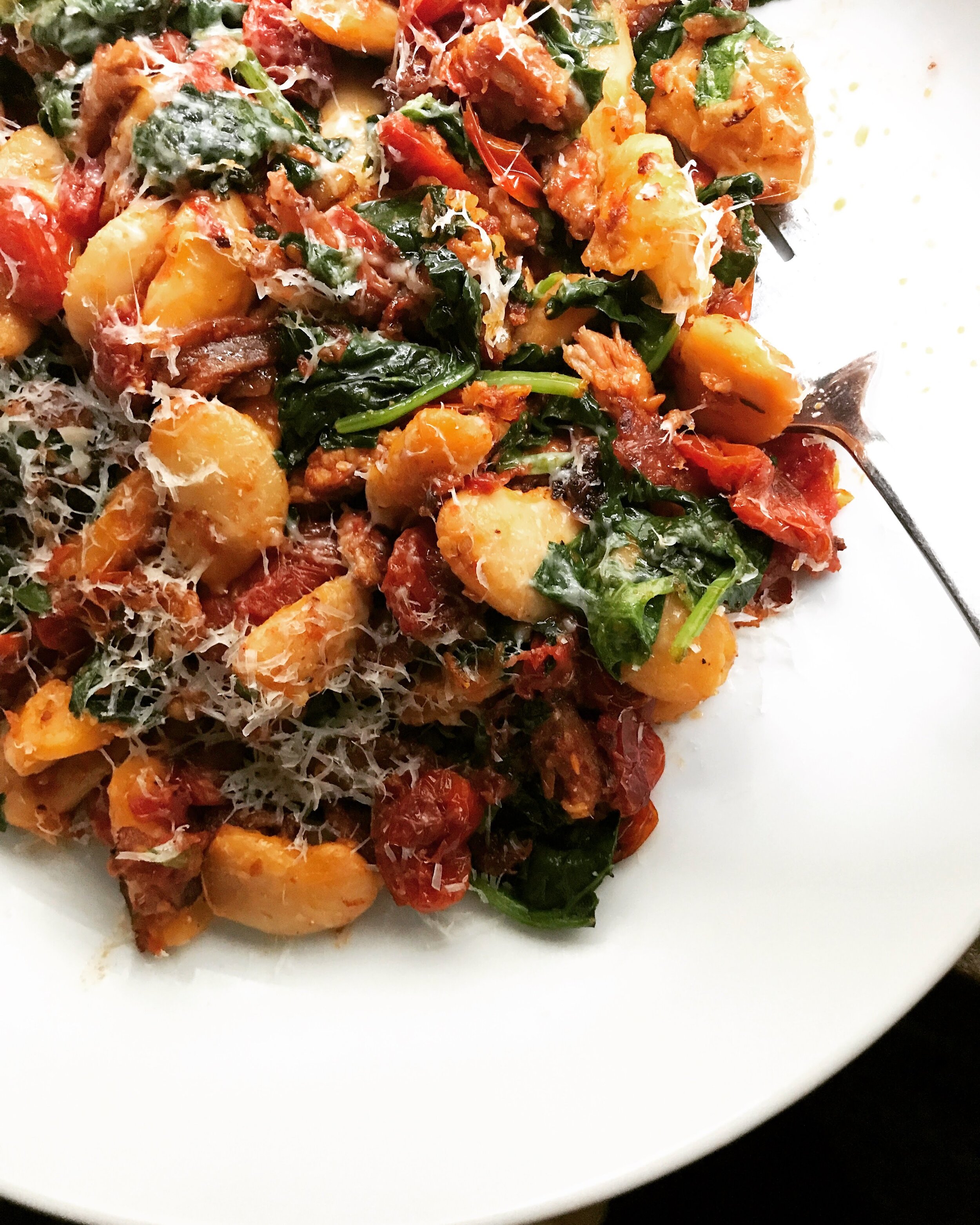How to Make Perfect Pork Chops
The other day, a friend of mine said to me, "I don't really like pork chops."
I kept my mouth shut, but inside I was like, "That's inconceivable. I will bet a kajillion dollars that you've never eaten a properly cooked pork chop."
I know this because I didn't eat a properly cooked pork chop until I was a grown adult (sorry, Mom—it be true). Up until then, I thought "pork chops" meant that you way overcook meat and then smother said meat with Campbell's cream of chicken/mushroom soup gravy. For the record (I've mentioned it twice now on this blog), I still think those soup pork chops are fucking delicious, but they are significantly more delicious when the meat isn't so overdone and tough.
At some point long after leaving the nest, I ordered a pork chop in a restaurant and finally learned that they can be as tender as a good steak, and maybe even more flavorful.
How to Make Pork Chops
Ready yourself for the other white meat. Here's what you need to know.
1. Buy quality, thick-cut pork chops.
You guys know this. Buy quality meat from a reputable farm, butcher or market. It's just better. While you're at it, buy the thick-cut pork chops (I used boneless in this demo recipe, but bone-in's great too). Thin-cut pork chops have their place, I suppose, but it is not here... at least not if you want that kind of pork chop that shatters antiquated views on what a pork chop can taste like.
2. Dry the chops first.
To get a good sear on any meat, pat it dry with a paper towel before you add your salt, pepper and/or desired spice rub.
3. Watch the clock.
Normally I'm kinda loosey-goosey with my cooking times and amounts and whatnot, but with pork chops I actually watch the clock. Like a good burger, you only flip a pork chop once.
4. No fear. medium-rare Pork chops are safe (and delicious).
There's a reason people are weird about cooking pork. My mom is not to blame for the overcooked pork chops, people! The USDA told her and everyone else to cook the crap out of pork back in the day to kill a bacteria called trichinosis. But now they have admitted that was overkill and adjusted their recommendations in 2011.
For taste purposes (and safety), the internal temp should reach 145°F for medium-rare and about 150°F for medium. 160°F will have no pink, but after that you'll risk getting into overcooked meat territory and there's no turning back. If you aren't sure what you like (i.e. you've never had a pork chop that wasn't well-done and then well-done again), err on the side of 145°F, taste it and you can always put it back into the skillet if you decide that's too pink for you.
5. Let it rest.
At least a three-minute resting period is not to be trifled with. It helps keep the pork chop juicy and delicious. Don't cut into it until after the resting is complete.
6. Make a Bonus pan sauce.
You could stop when the chops are done, but you could also make use of the delicious meaty bits and rendered fat to make an easy pan sauce. There are so many ways to do this with different flavor profiles, but the basic formula is aromatics + acid + liquid. the training wheels version is just garlic, maybe some fresh herbs, acid and liquid.
Perfect Pork Chops
paleo, gluten-free, whole30-friendly recipe | serves 2
Pork Chop Ingredients
- 2 thick-cut pork chops (about 1.5 inch thick)
- kosher salt
- black pepper
- ~2 T olive oil
Basic Pan Sauce Ingredients
- 1-2 cloves of garlic, minced
- a couple sprigs of thyme or rosemary
- about 1/2 cup liquid (apple cider vinegar, lemon juice, broth, OJ, apple juice, hard cider, wine, etc.)
- optional: 1 tsp arrowroot powder
Instructions
- Pat the pork chops dry with a paper towel. Don't skip this step—it's important.
- Sprinkle the chops generously with kosher salt and black pepper on both sides.
- Heat olive oil in a skillet on medium-high heat. If you're planning on whisking up a pan sauce, don't use a nonstick pan or it'll scratch.
- One the oil is hot, carefully set the pork chops in the pan. Cook for 3-4 minutes on the first side.
- Flip them, turn the heat down to medium and cook for another 5 minutes. If you want yours without any pink, do about 4 minutes on the first side and then 6 minutes on the flip.)
- Check the internal temp with a meat thermometer. I shoot for 145°F, which is medium-rare. Medium's great too (150°F). I'm not a fan of well done (160°F), but you do you.
- Remove the pork chops and let them rest for a couple of minutes under a plate or foil tent.
- As the pork chops are resting, make the pan sauce. It's choose your own adventure here, really. It's hard to mess up as long as you haven't totally burned anything.
- Keep all the bits in the pan, (don't wipe it out), keep the heat on medium and add the aromatics (garlic + herbs) and sauté for a 30-60 seconds until fragrant. Add a bit of oil or butter if you need some extra fat in the pan.
- Deglaze the pan by adding acid and/or other liquid and whisking until all or most of the bits are melted into the sauce. I often use chicken broth with a bit of apple cider vinegar because I usually have those two things in my pantry. (If you like a thicker sauce, mix a bit of arrowroot powder into the broth before you add it to the pan.)
Tips
- If your pork chops aren't thick-cut, you'll want to cut down on cook time a minute or two.
- I wrote this recipe to serve 2, but obviously you can make as many pork chops as you want. Don't crowd the skillet too much though!
- I used this same pork chop cooking method on these Chinese Five-Spice Pork Chops.
- I also love pork chops with Chimichurri instead of pan sauce. Or anything with chimichurri, seriously.
Anyone else realize how good pork chops were after 2011?













